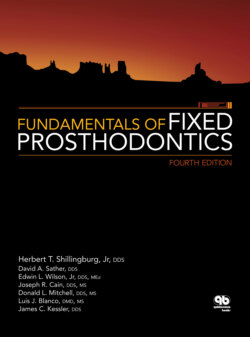Читать книгу Fundamentals of Fixed Prosthodontics - James C. Kessler - Страница 87
Glass ionomer
ОглавлениеSmall lesions where extensions can be kept minimal and where preparation retention will be minimal can be restored with glass ionomer. It is useful for restoring Class V lesions caused by erosion or abrasion (Fig 6-2). It also can be employed for incipient lesions on the proximal surfaces of posterior teeth by use of a so-called tunnel preparation, which leaves the marginal ridge intact (Fig 6-3).
Glass ionomer has found a niche in the restoration of root caries in geriatric and periodontal patients (Fig 6-4). An occlusal approach may be precluded by the presence of an otherwise acceptable crown, or a conventional restoration at such an apical level might require the destruction of an unacceptable amount of tooth structure. In addition, handpiece access may be too restricted to create the needed retention for a small amalgam restoration.
Glass ionomer also can be placed rapidly enough to serve as an interim treatment restoration to assist in the control of rampant caries (Fig 6-5). This is further enhanced by the release of fluoride by the material.
